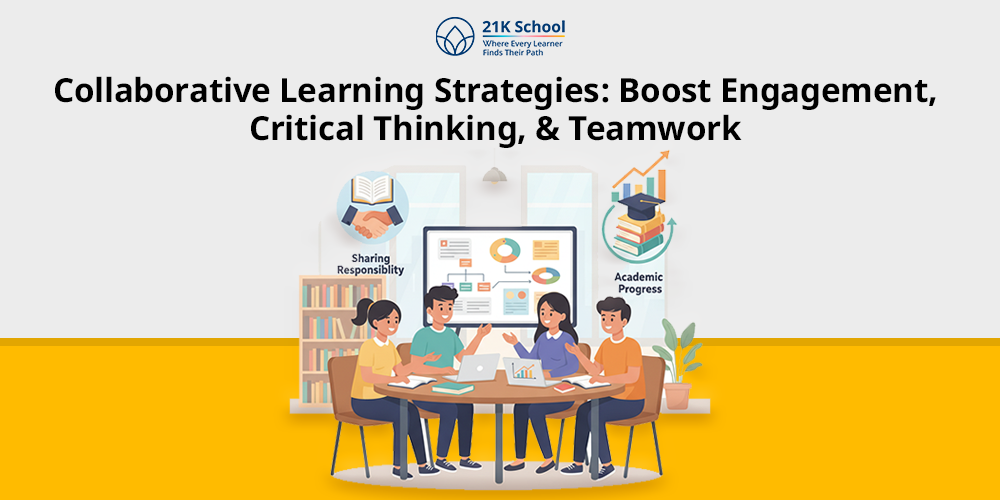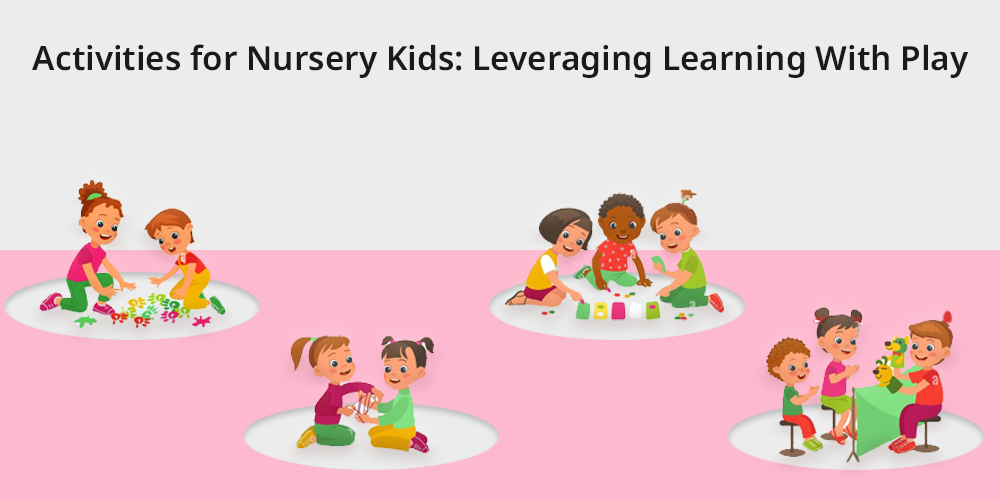
Play is the most effective way for children in the nursery stage to acquire new knowledge.
At this age, a child’s brain develops quickly, so hands-on activities are vital for learning about his or her environment. A range of easy and imaginative activities benefit a nursery child’s development in various areas.
Twenty-five fun and instructive activities that are perfect for nursery children are described in this article. They are simple to set up, use only a few things, and have a positive impact on children’s development.
Contents
- 25 Activities for Nursery Kids
- 1. Sensory Play with Playdough
- 2. Color Sorting Activity
- 3. Shape Matching
- 4. Animal Sound Game
- 5. Musical Chairs
- 6. Water Play
- 7. Alphabet Tracing
- 8. Vegetable Stamping
- 9. Treasure Hunt
- 10. Puzzles
- 11. Hopscotch
- 12. Nature Walk and Scavenger Hunt
- 13. Finger Painting
- 14. Sorting by Size
- 15. Paper Tearing Collage
- 16. Dance Party
- 17. Play Kitchen
- 18. Story Time with Picture Books
- 19. Sorting by Texture
- 20. Build a Block Tower
- 21. Counting Fun with Objects
- 22. Fun with Stickers
- 23. Indoor Obstacle Course
- 24. Balloon Bounce
- 25. Nature Art with Leaves and Flowers
- How Important Are Activities for Early Learners?
- In Conclusion
25 Activities for Nursery Kids
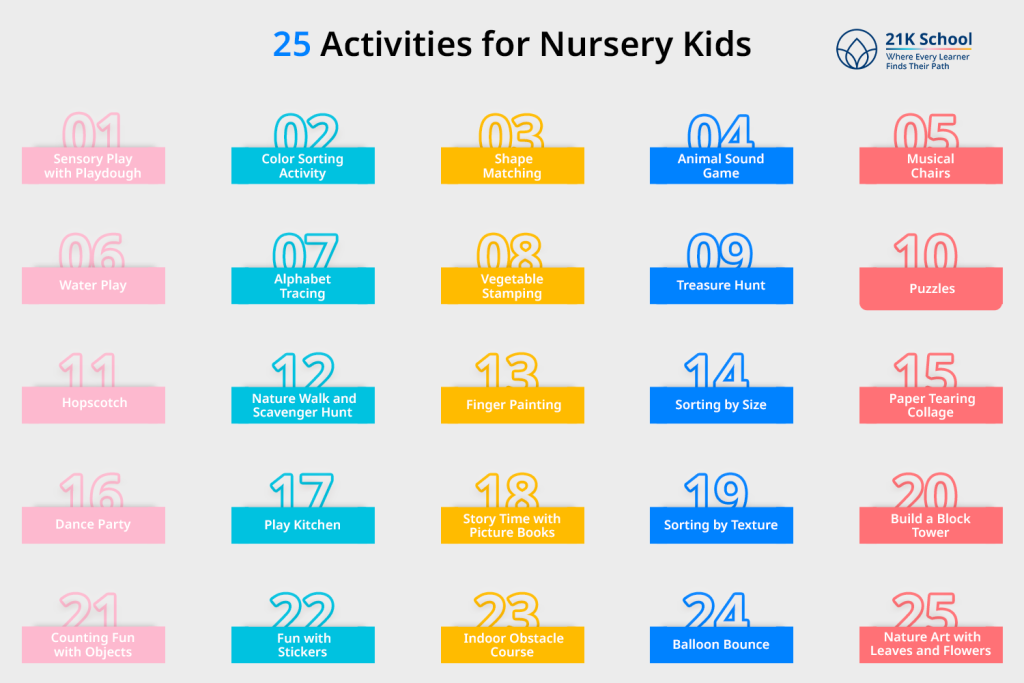
1. Sensory Play with Playdough
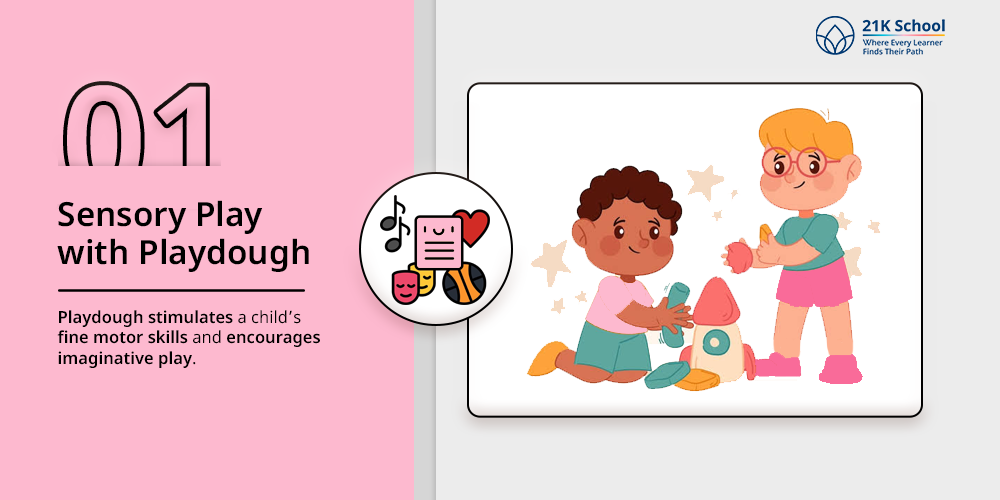
Playdough stimulates a child’s fine motor skills and encourages imaginative play.
- Gather These Items: Safe, edible play dough, cookie cutters, rolling pins and beads.
- How to Do It: Give children the freedom to manipulate and form the playdough into anything they like. Choose various tools to make playing with playdough more enjoyable.
- Pro Tip: For peaceful sensations, consider adding either a lavender or lemon fragrance.
2. Color Sorting Activity
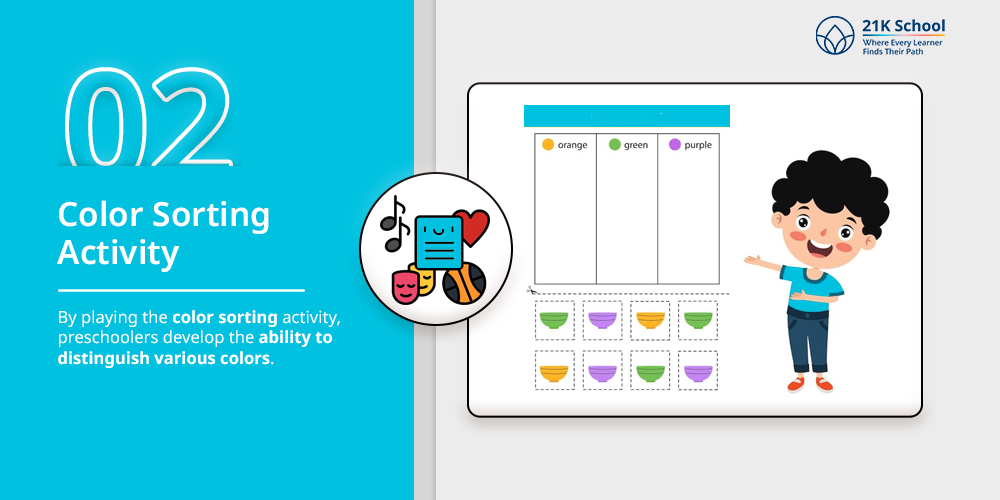
By playing the color sorting activity, preschoolers develop the ability to distinguish various colors.
- Gather These Items: Bowls or mats in different colors, as well as pom-poms, blocks or buttons.
- How to Do It: Ask the kids to put objects into different bowls based on their colors.
- Pro Tip: Start by using primary colors and then move on to show children other shades.
3. Shape Matching
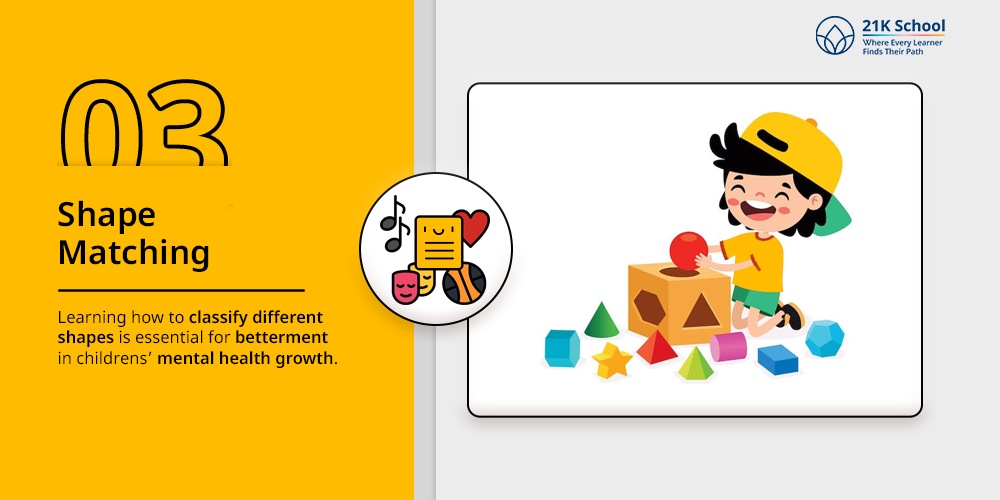
Learning how to classify different shapes is essential for betterment in childrens’ mental health growth.
- Gather These Items: Pieces and templates or a paper matching game setup.
- How to Do It: Have children place the shape close to the one with a similar form on the matching board.
- Pro Tip: Incorporate 3D blocks that the children can hold.
4. Animal Sound Game
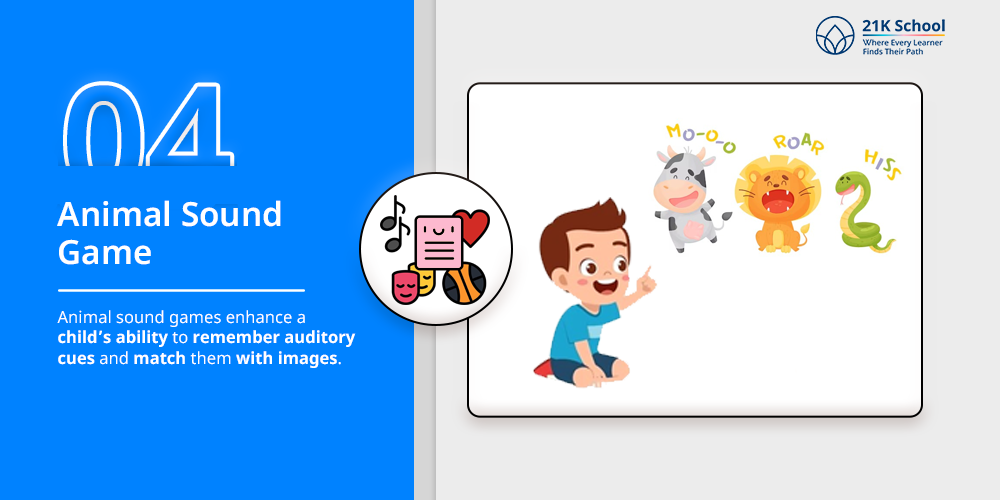
Animal sound games enhance a child’s ability to remember auditory cues and match them with images.
- Gather These Items: Animal figures and different spelling bee recordings or your own voice.
- How to Do It: Make an animal sound and ask the child to name the animal.
- Pro Tip: Transform the activity by using flashcards for guessing.
5. Musical Chairs
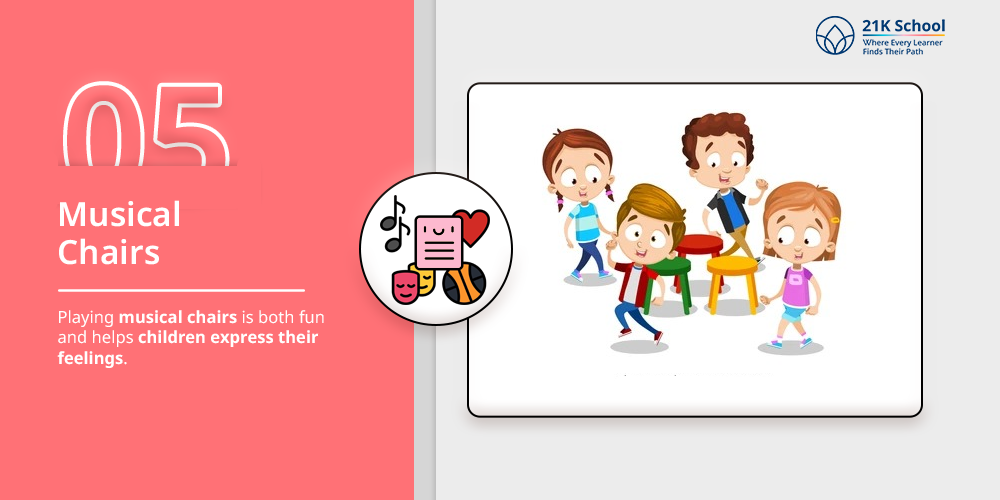
Playing musical chairs is both fun and helps children express their feelings.
- Gather These Items: Music player, chairs.
- How to Do It: Every child circles the chairs as they listen to the music. The music stops after a few seconds. At that moment, everyone should find a chair and take a seat.
- Pro Tip: Everyone should have an equal opportunity to join in the game.
6. Water Play
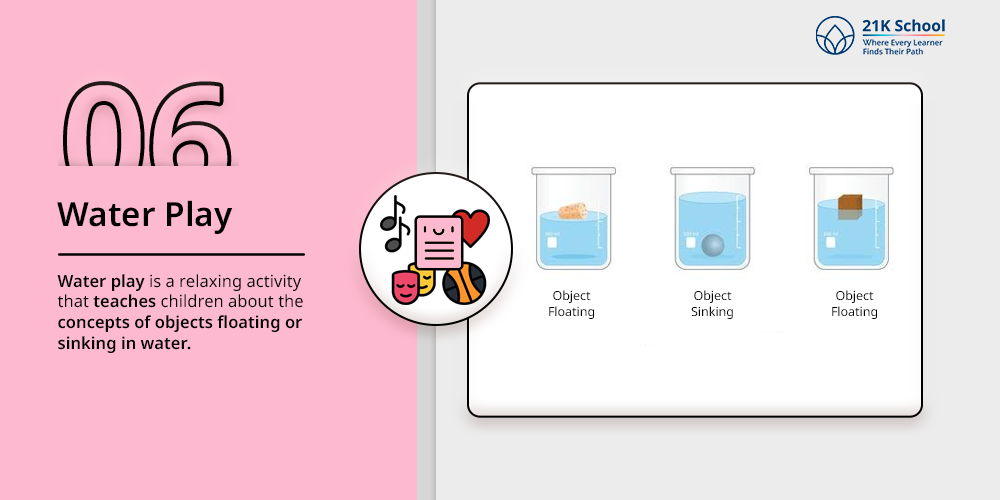
Water play is a relaxing activity that teaches children about the concepts of objects floating or sinking in water.
- Gather These Items: Sufficient water in a container, a few cups and some jumbo jets.
- How to Do It: Children can explore pouring, scooping and having fun with the water.
- Pro Tip: Include different colored sponges to make the water more interesting for kids.
7. Alphabet Tracing
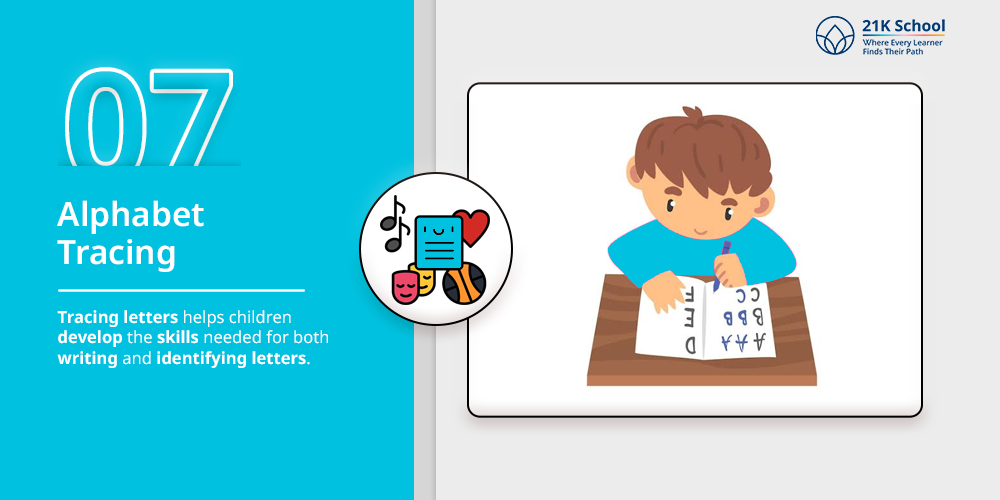
Tracing letters helps children develop the skills needed for both writing and identifying letters.
- Gather These Items: Alphabet worksheets, crayons, sand tray.
- How to Do It: Have them follow the outlines of letters with their hands or crayons.
- Pro Tip: Repeat the audio of the letter as children follow the line.
8. Vegetable Stamping
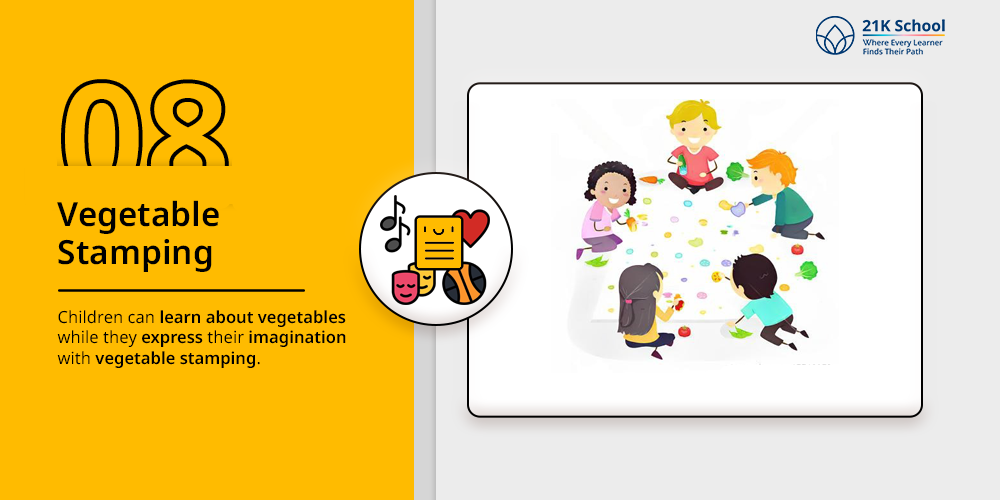
Children can learn about vegetables while they express their imagination with vegetable stamping.
- Gather These Items: Okra, potatoes, celery, paint, paper.
- How to Do It: Spread paint on vegetables and stamp them on paper.
- Pro Tip: Make floral designs with celery and star shapes with okra.
9. Treasure Hunt
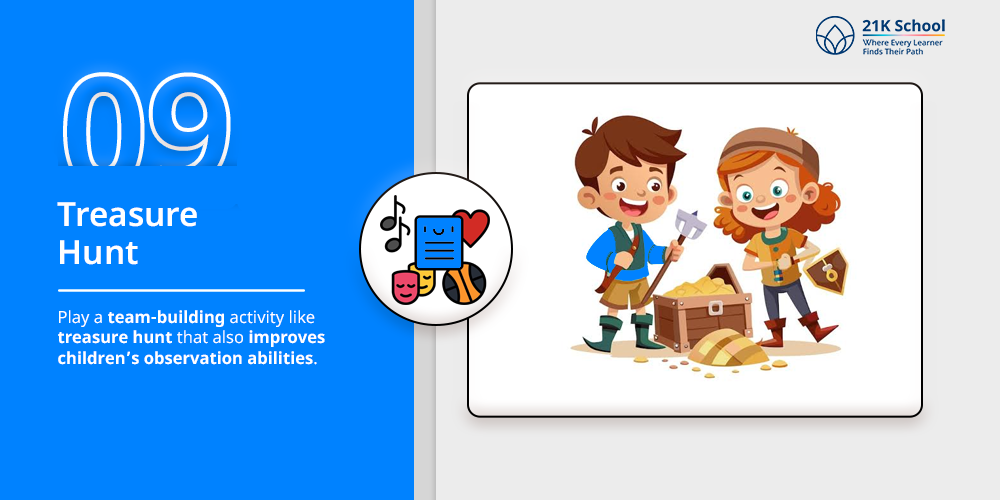
Play a team-building activity like treasure hunt that also improves children’s observation abilities.
- Gather These Items: Pictures that point to hidden objects.
- How to Do It: Hidden objects and clues or maps are provided for kids to locate.
- Pro Tip: Try making the treasure hunt based on a theme, such as the ocean or the jungle.
10. Puzzles
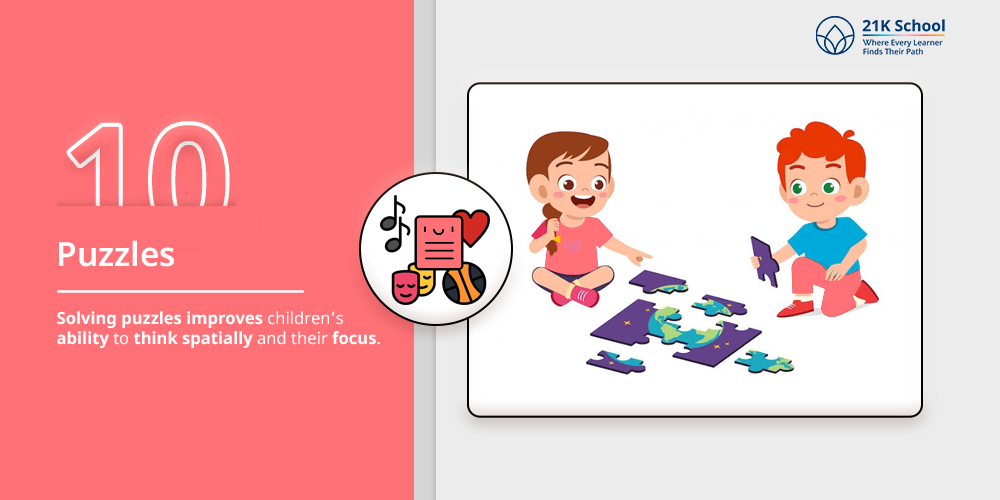
Solving puzzles improves children’s ability to think spatially and their focus.
- Gather These Items: Age-appropriate wooden or cardboard puzzles.
- How to Do It: Assist children in fitting the puzzle pieces together to show the picture.
- Pro Tip: Start with puzzles featuring features that young hands can easily grasp.
11. Hopscotch
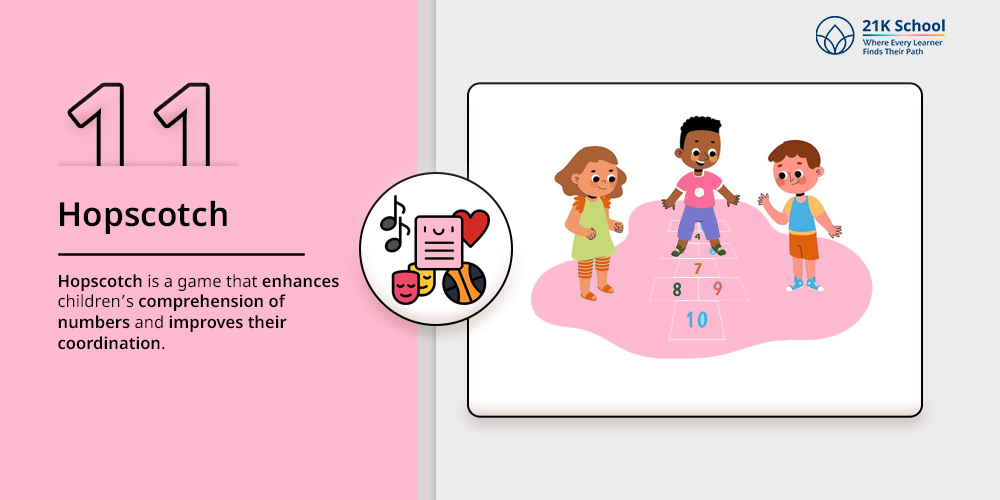
Hopscotch is a game that enhances children’s comprehension of numbers and improves their coordination.
- Gather These Items: Chalk or hopscotch mat, beanbag.
- How to Do It: Mark a hopscotch game on the ground and follow the sequence while jumping.
- Pro Tip: The kids can practice their balance by trying to land the beanbags on each number.
12. Nature Walk and Scavenger Hunt
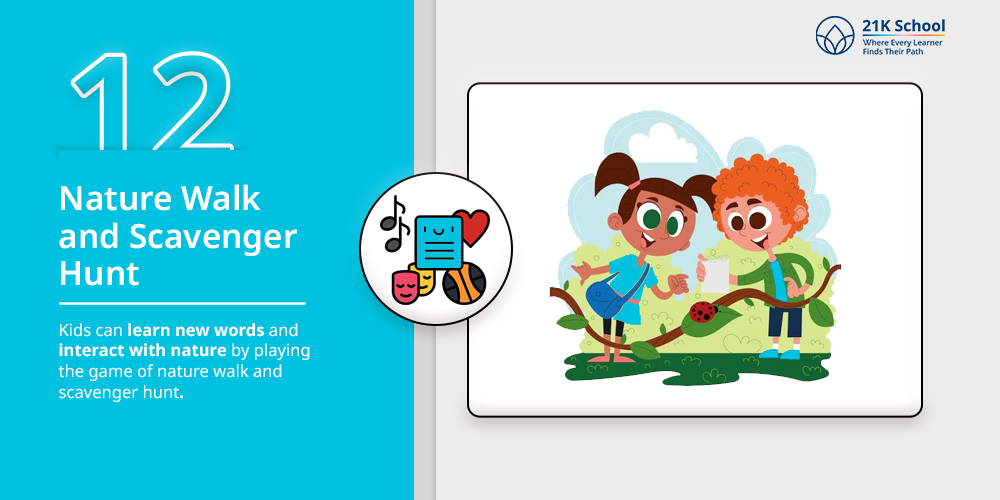
Kids can learn new words and interact with nature by playing the game of nature walk and scavenger hunt.
- Gather These Items: A list of items to look for with a basket or a bag.
- How to Do It: Encourage the kids to search for a variety of things as they explore the outdoor environment.
- Pro Tip: Have the children document the items they found during their nature walk by taking pictures.
13. Finger Painting
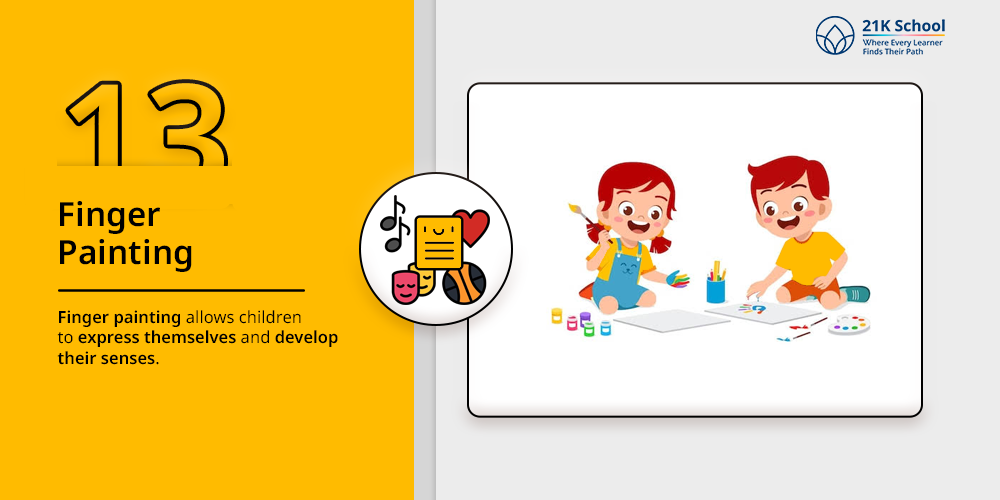
Finger painting allows children to express themselves and develop their senses.
- Gather These Items: Non-toxic paint, large paper sheets.
- How to Do It: Invite your children to use their fingers to draw in the paint on a piece of paper.
- Pro Tip: Encourage children to draw or paint by suggesting various natural inspirations.
14. Sorting by Size
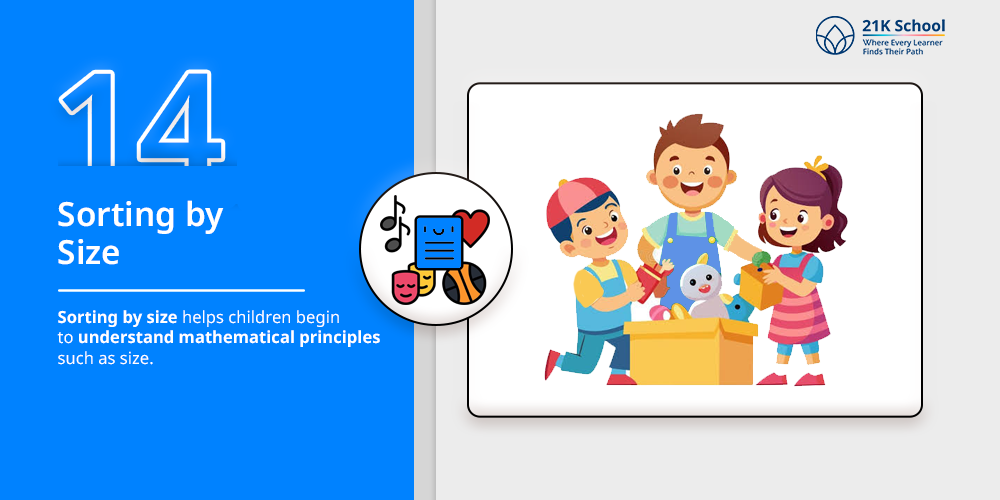
Sorting by size helps children begin to understand mathematical principles such as size.
- Gather These Items: Blocks, toy animals, spoons.
- How to Do It: Have children put things in order starting with the tiniest and ending with the largest.
- Pro Tip: Encourage them to defend their decisions by offering reasons.
15. Paper Tearing Collage
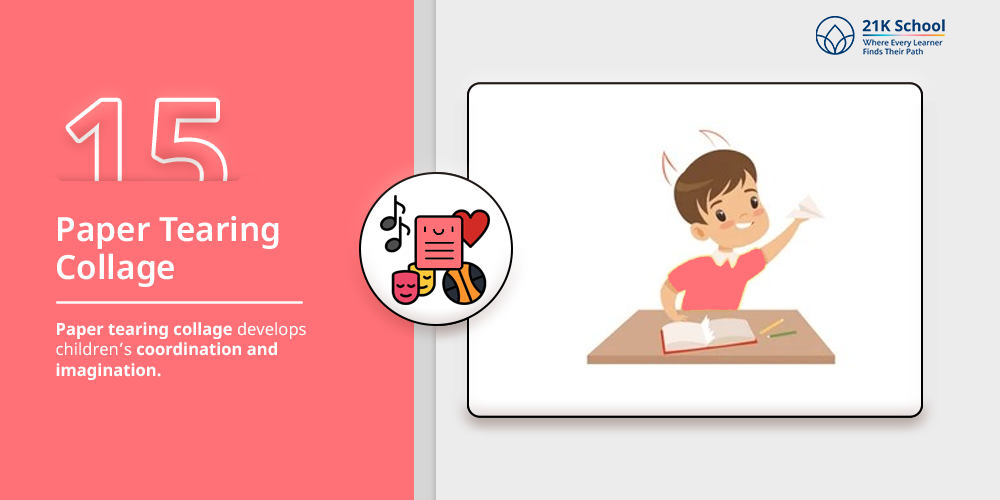
Paper tearing collage develops children’s coordination and imagination.
- Gather These Items: Colorful paper, glue, base sheet.
- How to Do It: Invite the children to cut paper into little pieces and attach them to a collage.
- Pro Tip: Choose papers with varied feels to stimulate different senses.
16. Dance Party
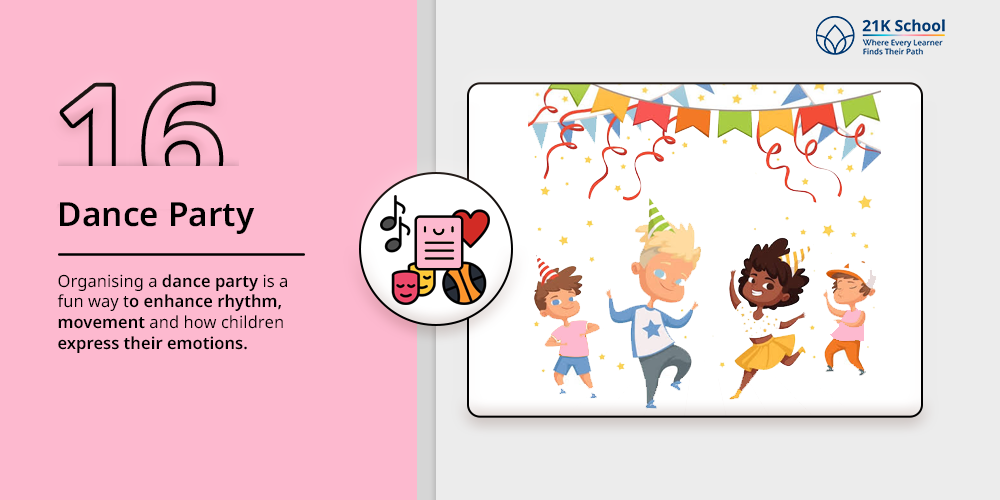
Organising a dance party is a fun way to enhance rhythm, movement and how children express their emotions.
- Gather These Items: Music player, scarves or ribbons.
- How to Do It: Enjoy dancing together with upbeat music as kids choose to be themselves or copy a dancer’s moves.
- Pro Tip: Let them dance to music inspired by their favorite themes.
17. Play Kitchen
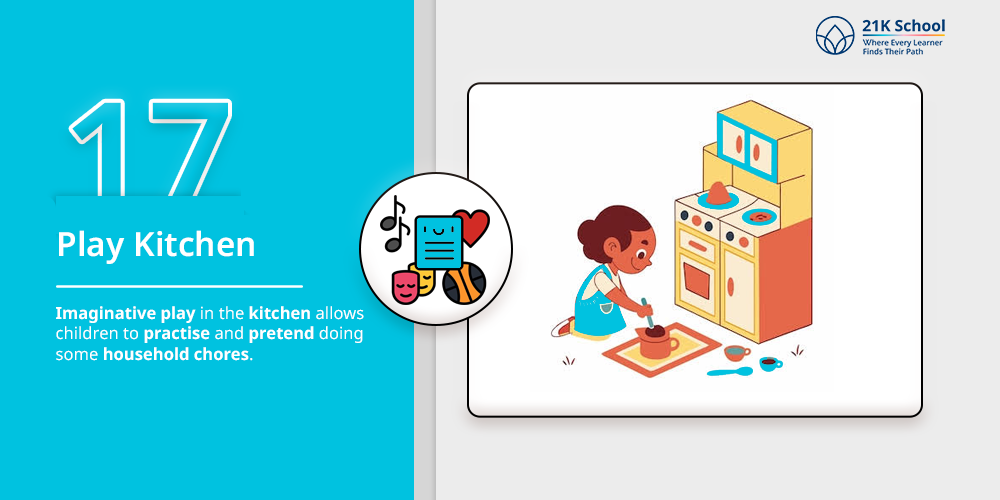
Imaginative play in the kitchen allows children to practise and pretend doing some household chores. It also helps children develop their social and emotional well-being.
- Gather These Items: An oven, cooking equipment, would-be dishes, bowls, spoons and aprons.
- How to Do It: Prepare a space where your child can play in a kitchen. Help kids pretend to prepare meals in a restaurant or serve food to others. Add dialogue to enhance communication.
- Pro Tip: Shake up the activities by switching out toys or asking children to help with tasks. Like setting the table or pretending to buy groceries.
18. Story Time with Picture Books
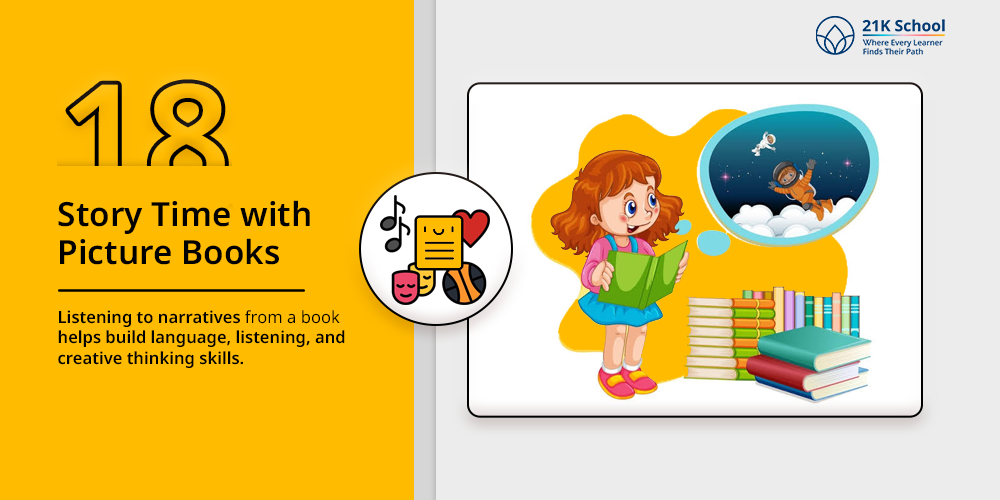
Picture books help bring stories to life for children. Listening to narratives from a book helps build language, listening, and creative thinking skills.
- Gather These Items: Colorful picture books, puppets or comfortably seated areas (if desired).
- How to Do It: Use a slow pace, lively tone and take time to stop and ask your questions. Invite children to flip the pages and touch pictures in the book. Emphasize words with a strong voice and exaggerate facial expressions.
- Pro Tip: Look for books that offer tactile elements, flaps to lift, and lots of rhythm to keep your child entertained.
19. Sorting by Texture
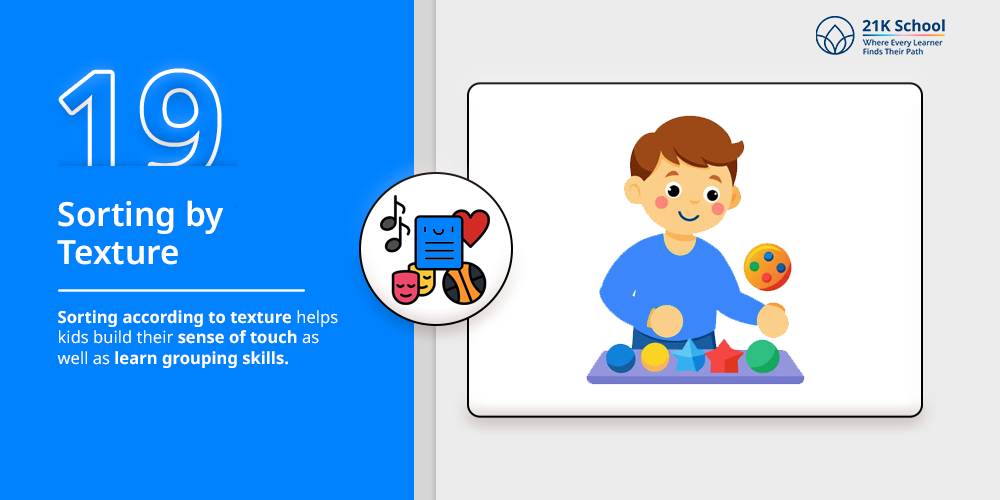
Sorting according to texture helps kids build their sense of touch as well as learn grouping skills.
- Gather These Items: Sandpaper, cotton balls, silk cloth, rubber, foil, sponges.
- How to Do It: Have kids feel and handle every object one by one. After that, invite them to arrange the items according to their textures, such as rough, smooth, soft, hard and bumpy.
- Pro Tip: Pick something that you can’t see by covering your eyes.
20. Build a Block Tower
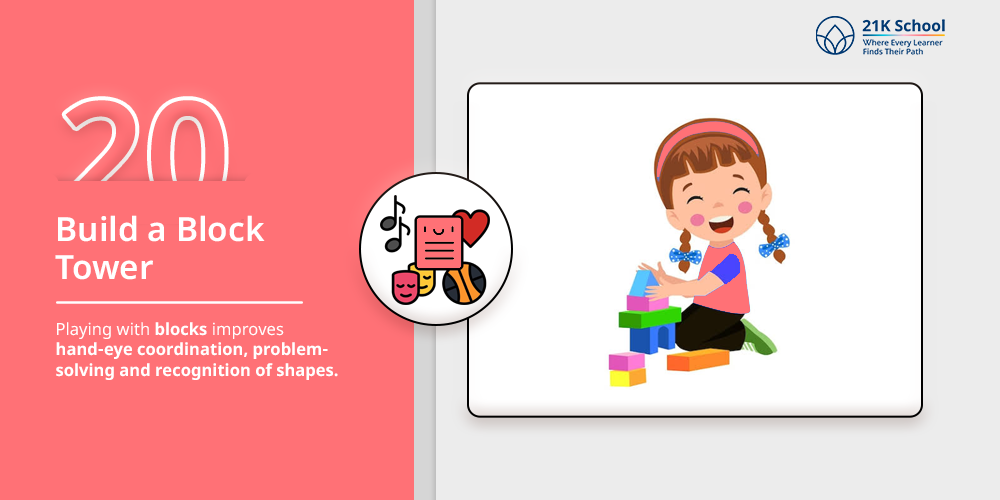
Playing with blocks improves hand-eye coordination, problem-solving and recognition of shapes. It helps kids understand the importance of proper organization and structure.
- Gather These Items: Different variations of building blocks.
- How to Do It: Challenge kids by asking them to build their towers as tall as they can without it all coming crashing down. Have children build complex designs using a limited set of blocks or big and small blocks in a particular arrangement.
- Pro Tip: Make their towers into fantasy buildings or animal nests.
21. Counting Fun with Objects
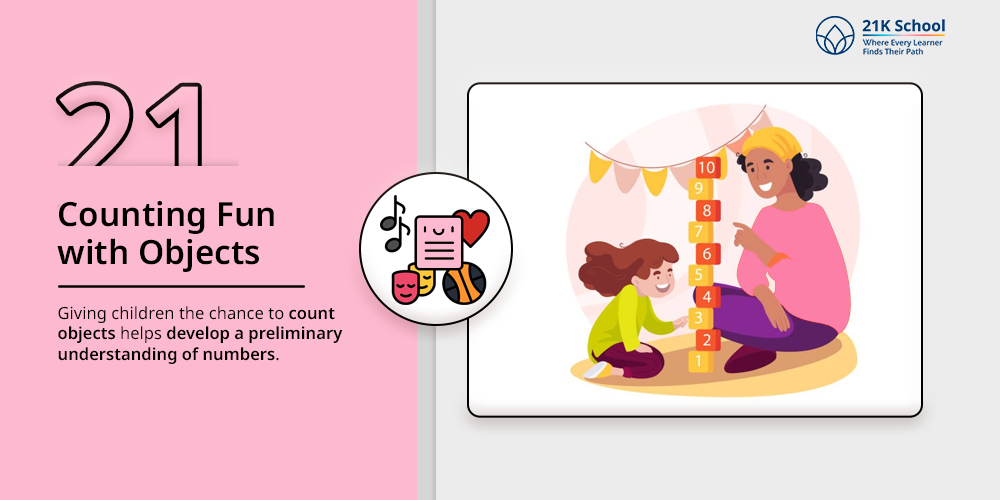
Giving children the chance to count objects helps develop a preliminary understanding of numbers. Physical objects help children understand numbers better.
- Gather These Items: Buttons, pebbles, cereal or small animals.
- How to Do It: Have kids count a particular number of objects. Start with 1–5 and gradually increase. Repeat numbers using songs or chart pictures.
- Pro Tip: Divide objects into smaller sets by using egg cartons or muffin trays.
22. Fun with Stickers
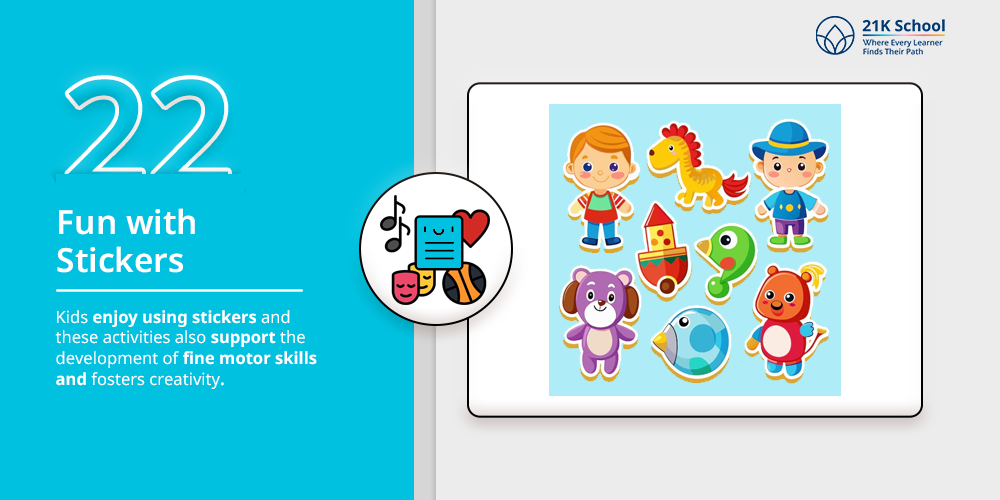
Kids enjoy using stickers and these activities also support the development of fine motor skills and fosters creativity.
- Gather These Items: A variety of stickers (such as animals, shapes and letters) along with paper and crayons.
- How to Do It: Kids can freely stick however they like or follow ideas such as arranging a zoo or creating a rainbow. Ask them to share the adventures of their sticker creations.
- Pro Tip: Go with stickers that can be moved without getting stuck to things.
23. Indoor Obstacle Course
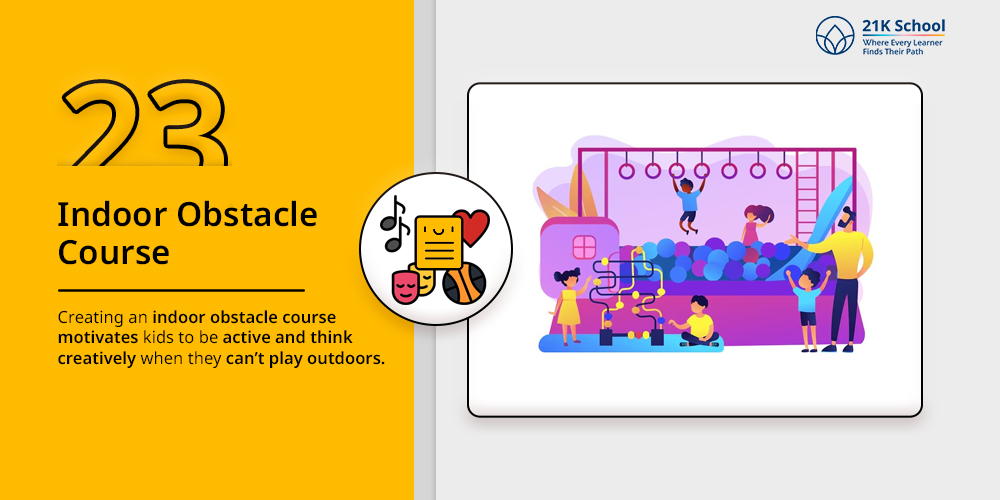
Creating an indoor obstacle course motivates kids to be active and think creatively when they can’t play outdoors.
- Gather These Items: Have handy pillows, chairs, tape, beddings or cardboard.
- How to Do It: Create a series of challenges for kids to overcome. A chair, leap over some pillows, pass through a section marked by masking tape, and hustle through an improvised tunnel. Demonstrate each move.
- Pro Tip: Setting a time limit for races or combining kids in teams will make things more exciting and enjoyable.
24. Balloon Bounce
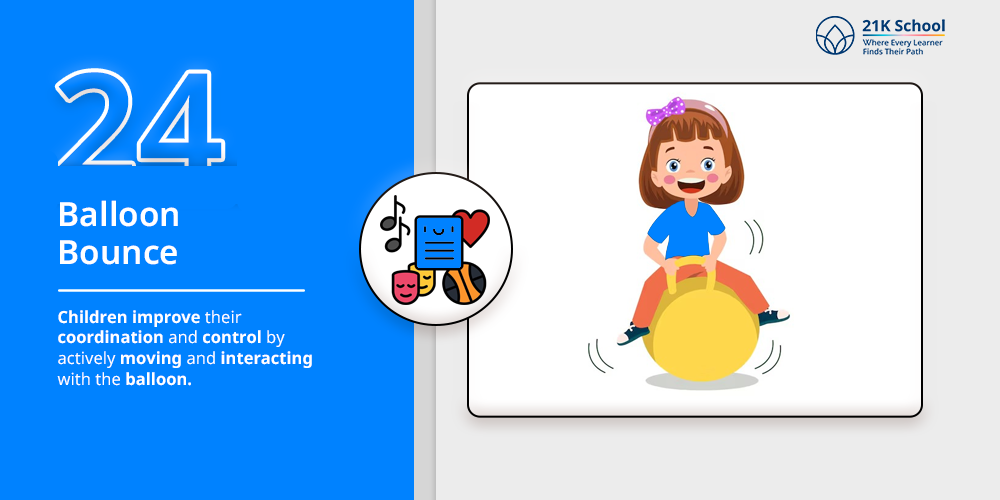
Children improve their coordination and control by actively moving and interacting with the balloon.
- Gather These Items: A few inflated balloons and a large area to play.
- How to Do It: Kids are tasked with making the balloon go up and down without touching it with their hands. Increase the level of difficulty by saying things such as “keep one hand behind your back.”
- Pro Tip: To soothe particularly active children, use gentle balloons or play some quiet music.
25. Nature Art with Leaves and Flowers
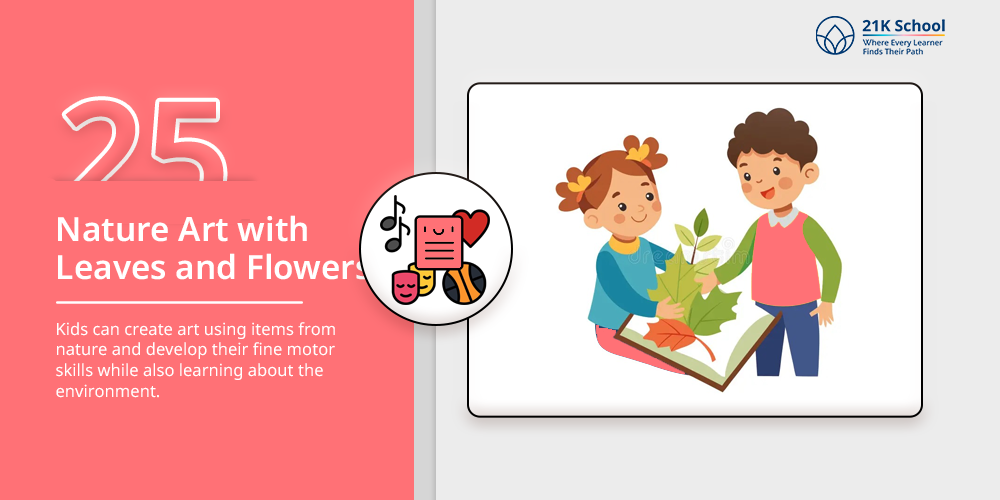
Kids can create art using items from nature and develop their fine motor skills while also learning about the environment.
- Gather These Items: Green leaves, flowers found outside, glue and either cardboard or construction paper.
- How to Do It: Kids can make portraits from leaves and flowers by glueing them onto paper to create animal forms, trees or faces.
- Pro Tip: Squeeze leaves and petals in thick books for 24 hours so they’re easier to use when making art.
How Important Are Activities for Early Learners?
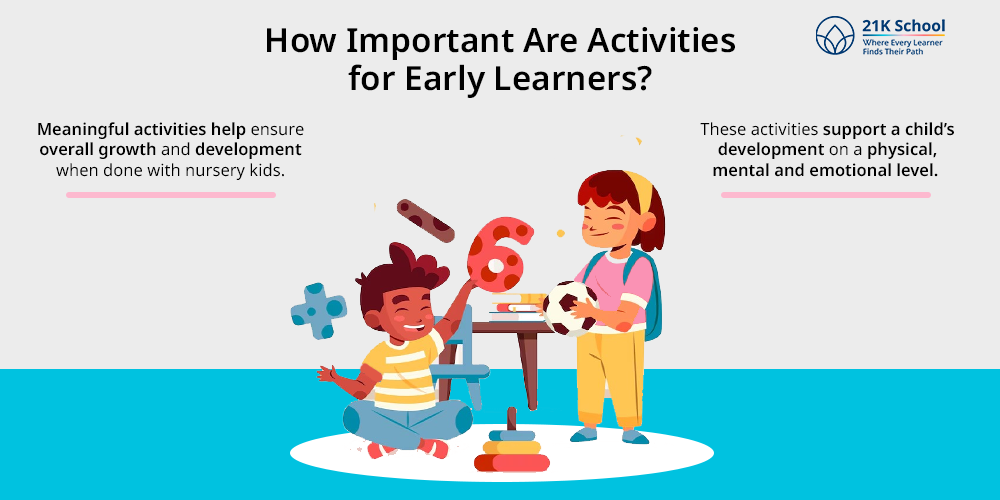
Meaningful activities help ensure overall growth and development when done with nursery kids. These activities support a child’s development on a physical, mental and emotional level.
Kids learn best when they actively practise and experiment with materials. Participating in activities helps build autonomy and encourages children to become confident learners.
Activities such as building, sorting, and storytelling help develop important skills required for success in future studies. These activities lay the foundation for future learning success throughout a child’s life.
In Conclusion
Young children learn, develop and discover the most during their nursery years.
Caregivers and educators can encourage a child’s natural inclination to learn by creating a supportive environment. This would enhance every aspect of development.
These easy and inexpensive activities help boost all aspects of a child’s growth.
You can easily use these tips to make every day a wonderful learning experience for your children.


